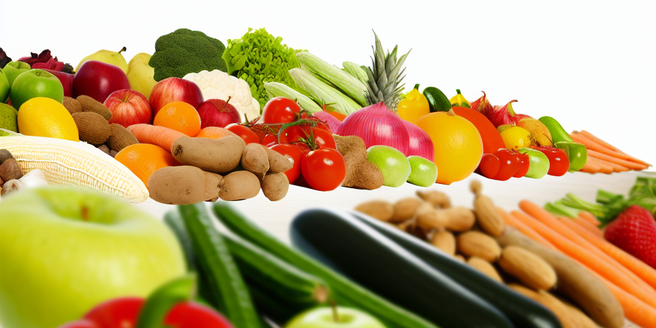Understanding the Concept of Food Security
Food security is crucial not only for individual wellness, but also for the overall health of communities. It ensures a steady, guaranteed supply of food, accessible to everyone at any given moment, promoting a healthier way of life. A lack of food security, characterized by the absence or difficult access to a stable food supply, may lead to severe health consequences such as malnutrition, which weakens the body’s natural defenses and leaves individuals deficient in essential nutrients necessary for normal body functioning. Other health problems can arise from this food insecurity, impacting the general state of health and survival of individuals and communities.
Exploring the Role of SNAP Benefits in Food Security
The Supplemental Nutrition Assistance Program, also known as SNAP, serves as an essential lifeline for a vast number of individuals who grapple with poverty and food instability. Implemented by the government, SNAP aims to reduce food insecurity and improve the beneficiaries’ quality of life by furnishing qualified recipients with benefits to buy eligible food products. These food items range from perishable products like breads, cereals, fruits, vegetables, dairy, and meat to essential non-perishable items. SNAP beneficiaries can redeem their benefits in authorized retail grocery outlets across the country, including small, medium, and large-scale stores. In summation, SNAP provides more than just financial assistance; it offers a chance for disadvantaged individuals and families to access nutritious food consistently and acts as a vital safety net alleviating poverty and food insecurity on a national scale.
Impact of SNAP Benefits on Local Economy
The Supplemental Nutrition Assistance Program, commonly known as SNAP, provides a multitude of benefits beyond food security. By boosting local economies through beneficiaries redeeming their SNAP benefits, it sets off a domino effect in the economic ecosystem. This includes an increase in demand for products, prompting suppliers to raise their production levels to meet this surge, which results in an advantage for local economies. Not only does this increase production, it opens job opportunities stimulating economic growth in various sectors from agriculture to retail. Additionally, this program stimulates overall economic growth with the extra dollars spent in communities resulting in benefits beyond food and job security. Hence, SNAP not only responds to immediate food needs, but also serves as a catalyst for local economic development and job growth.
Case Studies: Improving Food Security with SNAP
Numerous case studies over the years underline the positive impact that SNAP (Supplemental Nutrition Assistance Program) has made in the sphere of food security, with real people across different socio-economic backgrounds sharing their experiences. These results demonstrate the efficacy of SNAP, substantially decreasing food insecurity especially in low-income households who are most affected by food scarcity. SNAP has proven effective in alleviating the burden of skewed food distribution and limited financial capacity. It also plays a pivotal role in promoting proper nutrition, extending its influence from young children to adults, addressing nutritional deficiencies that might occur due to resource scarcity. The program has become a cornerstone in battling malnutrition and food insecurity amongst the financially vulnerable, continuing to promote health and wellbeing. The empirical evidence from various case studies stands as confirmation of the essential role SNAP plays in society today.
Maximizing the Power of SNAP Benefits: Practical Tips
The appropriate use of the Supplemental Nutrition Assistance Program (SNAP) benefits is instrumental in enhancing food security among vulnerable groups, achieved by prioritizing the purchase of staple and nutrient-rich foods. Staple foods such as grains, beans, and dairy products are budget-friendly and contribute to the daily recommended caloric intake. Nutrient-dense foods like fruits, vegetables, lean meats, and whole grains are essential for a balanced diet, high in essential nutrients, and low in calories.
Another method of optimizing SNAP benefits is by using them at local farmer’s markets that offer a variety of fresh, organic produce at affordable prices, which also supports local farming communities and boosts local economies.
Finally, nutrition education programs can further enhance the utility of SNAP benefits by guiding recipients in making informed food choices, understanding nutritional labels, learning about food groups, and finding economical, healthy recipes. Such training can equip individuals with practical skills to make the most of their SNAP benefits and improve their food security.



